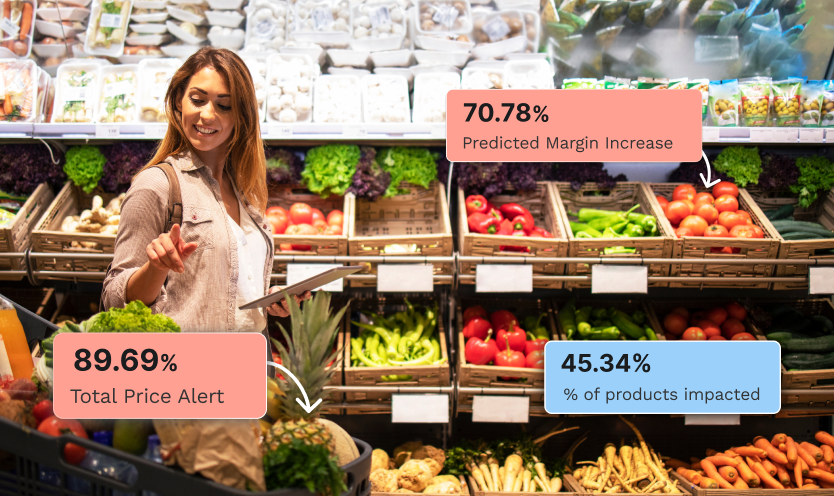Profit Rules, But Price Will Always be King
Profit Rules, But Price Will Always be King
Price optimization can help midsized ecommerce retailers to secure a profit margin and compete with the industry’s giants, but the experience of using analytics systems has to improve.
“I want it faster.” “Make it easier.” These familiar customer demands have inspired countless customer experience innovations. Table reservations, servers, and waiting for the check were bypassed by the White Castle System and a thousand fast food imitators. Grocery shopping that took up an entire morning along Main Street – butcher, baker, and candlestick maker – became an-in-one convenience when Piggly Wiggly invented supermarkets.
Ecommerce (once an innovation itself) is constantly being reinvented through the latest advances in systems and technology. The channel has expanded from websites to mobile apps and now social media. The logistics services that power it have spawned sci-fi like automation, from robotized warehouses to delivery drones that trundle through suburbs or zip through the sky.

If you’re in ecommerce, your strategies for responding to “faster” and “easier” can define your brand, the customer experience, and become key drivers of revenue. Indeed, the exigencies of ease and speed mean that quick commerce, or q-commerce, is becoming a category of its own.
Price is king
Success in such a dynamic environment requires constant investment and ingenuity. However, the days of surrendering profit to secure market share are over. Brand and customer experience will continue to be defining characteristics, but as our economy confronts spiraling costs and faltering demand the priority for ecommerce will be profit. And where profit rules, price is king.
The puzzle for online retailers is how to keep prices low enough to attract customers but high enough to ensure a solid margin. Solving this problem has fueled a data analytics arms race, where ecommerce firms commanding the biggest resources gain a seemingly unassailable advantage. Their vast scale produces virtually boundless data, which in turn feeds armies of data scientists. Their ceaseless task is teasing profits out of competition-beating prices.

The power that emerges from the mastery of data is apparent when you consider that one online retailer is now bigger than the next 14 retailers combined. The inference is that the ecommerce industry is inexorably headed towards global domination by a handful of behemoths, but I am confident that this future is far from inevitable.
Seizing the opportunity
Artificial intelligence (AI) is automating data science and reducing the cost of advanced analytics. The challenge facing mid sized ecommerce players is that seizing this opportunity to level the playing field demands significant and ongoing investment in skilled (and expensive) people. Data may be overflowing, analytics is more affordable, but powerful price optimization technology can be highly complex.
Keeping up with the speed of the market typically requires dedicated resources able to interpret and apply the insights continually served up by decision intelligence systems. That will not do. Implementing sophisticated pricing strategies must become “faster” and “easier” if midsized online retailers – firms in the $5-300m revenue range – are truly able to take on the giants.
That’s the objective I’ve set for Hypersonix. We’re engineering our pricing optimization technology to make it as simple to use as any social media app. In fact, we think the experience should be similar. Imagine adjusting your prices on your mobile phone in about the time it takes to enjoy a cup of coffee. That’s a task that can be accomplished several times a day, matching the frequency of the big ecommerce firms replete with data science teams.
Trust is earned
There’s another factor to consider. Ease and speed in decision making is as much about trust as it is about smart analytics or intuitive interfaces. Executives responsible for revenue and profit must have complete confidence in the predictions made by their analytics system, otherwise its value will be more academic than actionable.

Trust is earned, but that doesn’t mean the process has to be onerous. Our approach integrates testing with predictions so users build confidence over time. Here’s how it works: Hypersonix spies an opportunity to improve margin, recommends pricing adjustments, predicts the outcomes, and sets up an A/B test that allows you to gauge its accuracy.
Once you’ve seen sufficient results to satisfy yourself with consistent performance, you’ll feel confident to apply the recommendations without the comfort blanket of a test phase. It’s from this point that midsize ecommerce firms can optimize price both strategically and defensively, creating the foundation on which to build a profitable business that is resilient in volatile markets and primed for success even amid tough economic conditions.
This is the final part of a three-part series. Click here to read part one and click here to read part two.






